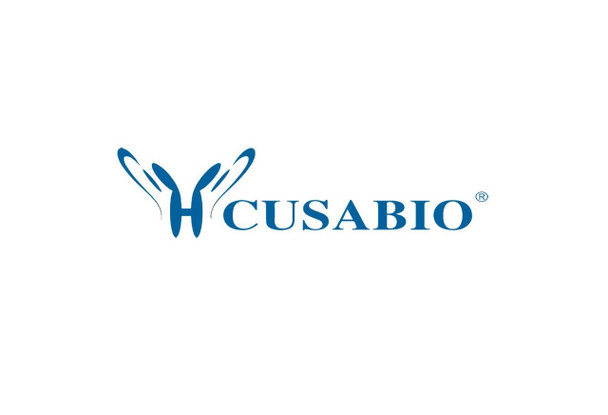Cusabio Human Recombinants
Recombinant Human Tripartite motif-containing protein 5 (TRIM5) | CSB-EP874861HU
- SKU:
- CSB-EP874861HU
- Availability:
- 3 - 7 Working Days
Description
Recombinant Human Tripartite motif-containing protein 5 (TRIM5) | CSB-EP874861HU | Cusabio
Alternative Name(s): RING finger protein 88
Gene Names: TRIM5
Research Areas: Cell Biology
Organism: Homo sapiens (Human)
AA Sequence: MASGILVNVKEEVTCPICLELLTQPLSLDCGHSFCQACLTANHKKSMLDKGESSCPVCRISYQPENIRPNRHVANIVEKLREVKLSPEGQKVDHCARHGEKLLLFCQEDGKVICWLCERSQEHRGHHTFLTEEVAREYQVKLQAALEMLRQKQQEAEELEADIREEKASWKTQIQYDKTNVLADFEQLRDILDWEESNELQNLEKEEEDILKSLTNSETEMVQQTQSLRELISDLEHRLQGSVMELLQGVDGVIKRTENVTLKKPETFPKNQRRVFRAPDLKGMLEVFRELTDVRRYWVDVTVAPNNISCAVISEDKRQVSSPKPQIIYGARGTRYQTFVNFNYCTGILGSQSITSGKHYWEVDVSKKTAWILGVCAGFQPDAMCNIEKNENYQPKYGYWVIGLEEGVKCSAFQDSSFHTPSVPFIVPLSVIICPDRVGVFLDYEACTVSFFNITNHGFLIYKFSHCSFSQPVFPYLNPRKCGVPMTLCSPSS
Source: E.coli
Tag Info: N-terminal 6XHis-B2M-tagged
Expression Region: 1-493aa
Sequence Info: Full Length
MW: 70.3 kDa
Purity: Greater than 90% as determined by SDS-PAGE.
Relevance: Capsid-specific restriction factor that prevents infection from non-host-adapted retroviruses. Blocks viral replication early in the life cycle, after viral entry but before reverse transcription. In addition to acting as a capsid-specific restriction factor, also acts as a pattern recognition receptor that activates innate immune signaling in response to the retroviral capsid lattice. Binding to the viral capsid triggers its E3 ubiquitin ligase activity, and in concert with the heterodimeric ubiquitin conjugating enzyme complex UBE2V1-UBE2N (also known as UBC13-UEV1A complex) generates 'Lys-63'-linked polyubiquitin chains, which in turn are catalysts in the autophosphorylation of the MAP3K7/TAK1 complex (includes TAK1, TAB2, and TAB3). Activation of the MAP3K7/TAK1 complex by autophosphorylation results in the induction and expression of NF-kappa-B and MAPK-responsive inflammatory genes, thereby leading to an innate immune response in the infected cell. Restricts infection by N-tropic murine leukemia virus (N-MLV), equine infectious anemia virus (EIAV), simian immunodeficiency virus of macaques (SIVmac), feline immunodeficiency virus (FIV), and bovine immunodeficiency virus (BIV) (PubMed:17156811). Plays a role in regulating autophagy through activation of autophagy regulator BECN1 by causing its dissociation from its inhibitors BCL2 and TAB2 (PubMed:25127057). Also plays a role in autophagy by acting as a selective autophagy receptor which recognizes and targets HIV-1 capsid protein p24 for autophagic destruction
Reference: "High-frequency persistence of an impaired allele of the retroviral defense gene TRIM5alpha in humans."Sawyer S.L., Wu L.I., Akey J.M., Emerman M., Malik H.S.Curr. Biol. 16:95-100(2006)
Storage: The shelf life is related to many factors, storage state, buffer ingredients, storage temperature and the stability of the protein itself. Generally, the shelf life of liquid form is 6 months at -20?/-80?. The shelf life of lyophilized form is 12 months at -20?/-80?.
Notes: Repeated freezing and thawing is not recommended. Store working aliquots at 4? for up to one week.
Function: Capsid-specific restriction factor that prevents infection from non-host-adapted retroviruses. Blocks viral replication early in the life cycle, after viral entry but before reverse transcription. In addition to acting as a capsid-specific restriction factor, also acts as a pattern recognition receptor that activates innate immune signaling in response to the retroviral capsid lattice. Binding to the viral capsid triggers its E3 ubiquitin ligase activity, and in concert with the heterodimeric ubiquitin conjugating enzyme complex UBE2V1-UBE2N (also known as UBC13-UEV1A complex) generates 'Lys-63'-linked polyubiquitin chains, which in turn are catalysts in the autophosphorylation of the MAP3K7/TAK1 complex (includes TAK1, TAB2, and TAB3). Activation of the MAP3K7/TAK1 complex by autophosphorylation results in the induction and expression of NF-kappa-B and MAPK-responsive inflammatory genes, thereby leading to an innate immune response in the infected cell. Restricts infection by N-tropic murine leukemia virus (N-MLV), equine infectious anemia virus (EIAV), simian immunodeficiency virus of macaques (SIVmac), feline immunodeficiency virus (FIV), and bovine immunodeficiency virus (BIV)
Involvement in disease:
Subcellular Location: Cytoplasm, Nucleus
Protein Families: TRIM/RBCC family
Tissue Specificity:
Paythway:
Form: Liquid or Lyophilized powder
Buffer: If the delivery form is liquid, the default storage buffer is Tris/PBS-based buffer, 5%-50% glycerol. If the delivery form is lyophilized powder, the buffer before lyophilization is Tris/PBS-based buffer, 6% Trehalose, pH 8.0.
Reconstitution: We recommend that this vial be briefly centrifuged prior to opening to bring the contents to the bottom. Please reconstitute protein in deionized sterile water to a concentration of 0.1-1.0 mg/mL.We recommend to add 5-50% of glycerol (final concentration) and aliquot for long-term storage at -20?/-80?. Our default final concentration of glycerol is 50%. Customers could use it as reference.
Uniprot ID: Q9C035
HGNC Database Link: HGNC
UniGene Database Link: UniGene
KEGG Database Link: KEGG
STRING Database Link: STRING
OMIM Database Link: OMIM









